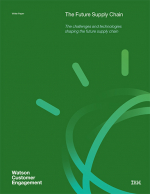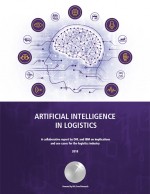The New Era of Supply Chain Begins
Create a modern supply chain that is transparent, intelligent and predictive, establish greater visibility into supply chain data and processes and by leveraging cognitive technologies, supply chain organizations can both predict and mitigate disruptions and risks and deliver more value to the business.
Digital business is changing business models and how we conduct business.
It is changing how businesses communicate, transact and interact with customers, suppliers and partners.
And it is accelerating the pace of business, in a world already operating 24/7.
How do businesses not just keep pace but stay ahead of the competition in this environment?
How do they adapt to, and exceed, ever-evolving global customer demands and expectations? How do they weather increasing volatility and risks?
Their ability to do so is largely dependent on their supply chain.
As much as 65 percent of the value of a company’s products or services is derived from suppliers.
Suppliers and the supply chain impact everything from the quality, delivery and costs of a business’s products and services, to customer service and satisfaction, and ultimately profitability.
Supply chain leaders are tasked with continually ensuring the quality, delivery and availability of supply while controlling costs.
They must monitor and mitigate an array of potential supply disruptions including both common events, such as weather, delivery delays and quality defects, as well as major events such as political unrest, natural disasters and the financial instability of suppliers.
They must also safeguard the brand, ensuring suppliers and product components live up to customers’ expectations and social values.
Today’s expectations are that inbound supply needs to be just as focused on customer experience, personalization and client delivery as the outbound side of the equation.
And in an era where innovation can mean the difference between success and stagnation, supply chain leaders are increasingly being called upon to collaborate with suppliers to
foster greater efficiency and innovation.
Lack of visibility and transparency is the greatest hurdle in achieving the supply chain organization’s objectives.
Most organizations lack transparency into critical links in supply chain processes as well as the visibility needed to better predict and prevent disruptions and inventory imbalance.
This largely stems from an inability to corral and make sense of an overwhelming amount of data scattered across different processes, sources and systems.
Supply chain organizations also are struggling to keep pace with change, both technological advances and the changes that the digital age is bringing to industries and markets.
Under these pressures, they lag in elevating their personnel and empowering them with the knowledge, data and capabilities needed to succeed.
What’s Related




Favorites





